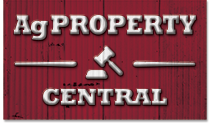
IN this week’s property review, three rural property specialists give their take on the property market in the light of recent trade, political and weather events, both at home and overseas.
When the federal government goes into caretaker mode leading up to an election, people typically delay important decisions and, in some cases, that is flowing through to property listings and sales resulting in lower inquiry levels.
Carbon players seeking clarity around methodology are also withholding critical investment decisions until the election outcome is known.
On top of this, many property inspections and auction dates have been delayed by several weeks due to the record flooding and earlier Cyclone in Queensland.
And given the recent United States tariff situation, did a number of large overseas investors and funds instruct their Australian representatives to hold off on any investment or acquisition activity?
While there was no obvious impact, interestingly, equity market volatility has been blamed for this week’s collapse of the $780 million sale of Australian Food & Agriculture Co to the New York-based Agriculture & Natural Solutions Acquisition Corporation (ANSC).
This aside, it appears the rain and stronger cattle and sheep prices have been timely and injected a much-needed shot of confidence into the rural property market.
Rawdon Briggs, Colliers
In regard to the increasing volume of listings now being publicly marketed, Colliers Agribusiness head Rawdon Briggs reports this is normal, with the market returning to the long-term mean.

Rawdon Briggs, Colliers International
He said some sales have been triggered by succession planning, which was the case with S. Kidman & Co and NAPCo a decade ago.
“In April 2015, Australia’s biggest private landholder S. Kidman & Co was listed for sale. Together with the world’s largest cattle station, Anna Creek, the Kidman portfolio of properties was valued back then at $390 million.”
Prior to that, NAPCo (one of Australia’s oldest and largest agricultural enterprises) covering 5.8 million hectares across Queensland and the Northern Territory and running about 178,000 head of composite cattle, sold an 80 percent share to QIC (Queensland Investment Corporation).
Mr Briggs said every ten years or so, there was a flush of property stock.
“For various reasons, private, corporates or institutions divest their entire flagship assets or portfolios or sell off smaller portions to reset operational efficiencies,” he said.
Mr Briggs said looking back over the last 40 years, the rural property market experienced the best four years up until the end of 2024.
“It is not uncommon for the market to pause and reflect, and then go again, which has been the pattern for the last 80 years.”
He said prior to World War II, the banks were more interested in a cattle mortgage (brand mortgage) than a land mortgage.
“After this period, freehold titles converted pastoral leases and the Australian population growth kicked in, regionally. Since then, there have been moderated market growth periods, for instance during the post Global Financial Crisis (GFC) period from mid-2008 to 2010.”
Mr Briggs said vendors and buyers could take some time to reach a fair value point, which has seen a doubling of time on market for average listings over the last two years, before going unconditional then settled.
“A+ and A-class production assets, like McPhee Beef Farms, are still highly sought-after by all buyers because these properties perform in all conditions and generally drive down the cost of production,” he said.
 Conversely, it was more difficult to close a B-class asset deal, with C and D-class assets potentially on the market for several years.
Conversely, it was more difficult to close a B-class asset deal, with C and D-class assets potentially on the market for several years.
“These properties may need to wait until market demand drives the bid price up and over the vendor’s aspiration, or until a spike in property or commodity values drives up the lending capacity of the entire buyer pool.”
In terms of overseas investment, Mr Briggs said the United States was a big capital market for the global economy and a number of institutional investors have a strong view that the current exchange rate makes Australia attractive.
“This, combined with the improved trade relationship we have with our largest trading partner, China, is a strong buy signal making Australian agricultural assets a perfect hedge for any US farmland and agribusiness investor to consider.”
Tariff factor
Mr Briggs believes Australia may become a more attractive investment destination given the US tariff situation.
“European or APAC (Asia-Pacific) region investors or fund allocation managers considering a US Farmland fund placement may now view Australia as more secure and better value for money.”
“The heightened geo-political risk, economic fragmentation of bond markets and growing uncertainty around future US trade policy, has delivered a strong institutional investor message of reassessing how and where they allocate capital,” he said.
Mr Briggs is seeing a broader rethink underway, one that favours stability, resource security and exposure to real assets outside of the US into other advanced economies like Australian farmland, direct investment or co-mingled funds into the ANZ region broadly.
Lisa Hewitt, Elders
Elders Queensland/Northern Territory General Manager Lisa Hewitt said despite higher interest rates and input costs, there was good competition for high quality property assets and as a result, they are moving through the pipeline and achieving good prices.

Lisa Hewitt
“An example is the brigalow belt in Central Queensland where an expansion of extractive industries, a declining available footprint and good proximity to markets are stemming demand and causing exceptionally strong prices,” she said.
Conversely, Ms Hewitt said assets that don’t offer relatability are more difficult to move.
“We are no longer seeing neighbours or locals buying the place 20km down the road for a premium price. Purchasers are being strategic.”
“Their sentiment has shifted from securing the next-door property and banking off their equity, to scrutinising potential returns in the wake of volatile international markets coupled with higher interest rates and input costs.”
However, Ms Hewitt said bought correctly, there was still value in some of those assets.
“For producers able to secure the right asset for their operation at the right price, the current dubiousness in the market represent a great opportunity.”
Ms Hewitt said those types of assets have experienced a ‘market reset’ which means they are slower moving and need to move to the right crowd.
“Elders is a huge business with 56 points of presence in Queensland and the Northern Territory alone, with over 40,000 customers. This means we have the database and the people to marry to the right places.”
With the end of 2024 seeing talk around the upcoming election, interest rates and market volatility, Ms Hewitt said many producers wanting to buy or sell properties sat back and held out, waiting to see what the new year would bring.
“Holdings are finally coming to the market. It was always there. Vendors were just waiting for the right time to list.”
Water
Ms Hewitt singled out water as another significant issue impacting property sales.
Assets with access to water or the ability to appropriate runoff in the best possible way are driving demand, she said.
When it comes to the large number of listings, she would not be drawn on whether some vendors have been holding out for a return to ‘big property prices’.
“Every property is different depending on where or what the asset is, and what the general markets are doing at the time for the relatable commodity.”
“It is about marrying borrower and vendor expectations. In previous years, there was exceptional confidence in the market, and it drove up prices. FOMO (fear of missing out) has now disappeared, and potential buyers are taking their time to scrutinise potential returns in the light of market volatility.”
Queensland land tax
Ms Hewitt believes the agricultural impact of the land tax was an unintended consequence of legislation introduced to make housing more affordable to everyday Australians.
Unfortunately, she said, many investors who had Queensland in their sights will go elsewhere.
“Australia as a whole remains an attractive investment opportunity for international investors. However, the land tax has made it difficult for corporate and international customers to operate in Queensland.”
“While there hasn’t been a monumental vacuum, some will exit the Queensland property market, but this will allow many family farm operators to compete for these assets.”
Geoff Warriner, JLL
JLL Agribusiness director Geoff Warriner said across the board, A-class assets are continuing to sell well.
“The B and C class properties are finding it more difficult to transact. This is a segment of the market that has been disproportionately impacted by the uncertainty in carbon origination.”
Mr Warriner said for the past five years, assets offering a carbon element had been responsible for holding up this part of the property market.
“When the property market slides, it is typically led by the B and C class assets. This happened when the federal government wound up the HIR (Human-induced regeneration) carbon methodology.”

Geoff Warriner
When it comes to the Queensland Land Tax, Mr Warriner said it is a disincentive that should be reconsidered.
“Legislation like this should be made on a national basis, not state-by-state. It is causing potential investors to jump borders and look at land outside of Queensland.”
Mr Warriner said acquisitions may be put on hold for the time being due to uncertainty surrounding the US tariff situation.
“The market has slowed, and investors will continue to tread with caution as a result of the uncertain tariffs, along with the upcoming federal election.”
“In general, potential buyers are not acting as quickly as they used to. The fear of missing out has disappeared and people are taking time to consider their property purchases.”
Despite this, Mr Warriner is confident there will be some big transactions among the large number of listings.
“A recent influx of properties may be the result of lower commodity prices, particularly for beef. While some vendors may be hoping to match record price levels achieved two years ago, this is only achievable for the right asset that fits a mandate,” he said.
“Stronger cattle prices are giving producers confidence to list their properties, but other factors are also in play including succession planning, change of direction, consolidation, investment funds running their course, as well as seasonal conditions.”
Mr Warriner said JLL had a good pipeline of listings for the remainder of 2025.
“Continuing on from last year, properties will be more difficult to sell but generally speaking, the market has been positive over the last five years.”

HAVE YOUR SAY